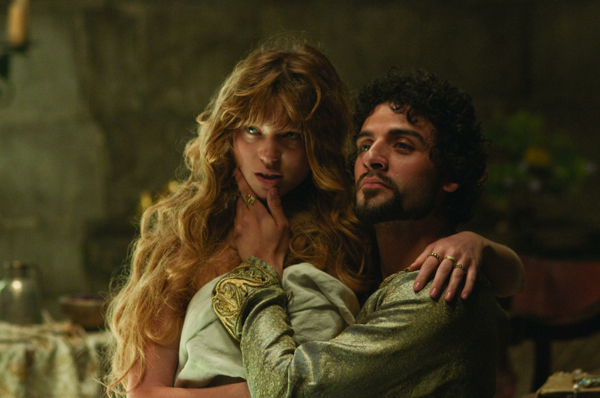Movie review by Greg Carlson
Ridley Scott’s “Robin Hood” is reportedly the most expensive version of the popular outlaw tale to date, but the resulting mess places the film near the bottom of the heap – no mean feat considering Kevin Costner’s ill-advised turn as the fabled archer in 1991. With Russell Crowe in the lead, one expects a dour, introspective, and serious-minded Robin, but the actor outdoes himself with brooding, furrowed-brow intensity, leeching away anything that resembles mirth, wit, or joy. Michael Curtiz’s brilliant “The Adventures of Robin Hood” – released more than seventy years ago – retains the crown as the definitive big screen version of the bandit’s fanciful biography.
While it may be tempting to view the subtext of Brian Helgeland’s screenplay through the lens of contemporary economic hardship – a convenient reading that simultaneously allows both conservative and liberal viewers to claim Robin as their champion – the script is instead a mishmash of hero tropes scarcely distinguished from material like “Braveheart” and Scott’s 2005 “Kingdom of Heaven.” “Robin Hood” marks Scott’s fifth collaboration with Crowe. If the actor’s choice of haircut is any indication, the pair likely hoped to recapture some of the success of “Gladiator,” and “Robin Hood” contains several scenes that mirror the action of the 2000 Academy Award-winning Best Picture.
Strangely, the film’s convoluted narrative re-imagines the origin of Robin Hood, fashioning a prequel of sorts in spite of Crowe’s maturity (the Internet Movie Database notes that Crowe is the oldest performer to play Robin Hood in a major motion picture, even topping Sean Connery’s aging fighter in Richard Lester’s “Robin and Marian”). Introduced as a soldier in the army of King Richard the Lionheart (Danny Huston), Robin Longstride has grown weary of the Third Crusade, due largely to the brutal slaughter of Muslims demanded by the power-mad English monarch. As Richard, Huston lolls around, rolling his eyes and generally playing crazy for the brief duration of his screen time. He makes an impression, mostly because he goes big when everyone around him underplays.
The other popular characters of the Robin Hood mythology nearly fade into the background. The pre-outlaw status of Robin means that the “Merry Men” have not been formally assembled, but the film renders Little John, Will Scarlet, Allan A’Dayle, and Friar Tuck as practically faceless extras on standby to serve Robin only when the need arises. The Sheriff of Nottingham is a non-entity, a curious change from the rumored version of the movie that might have cast Crowe in a dual role as protagonist and antagonist. The Sheriff’s malevolence is instead encompassed by Mark Strong’s Godfrey, a traitorous thug whose imposing, aristocratic bearing loosely mimics Basil Rathbone’s Sir Guy of Gisbourne.
A few revisions are made to the legend’s romantic angle, but they amount to little. Cate Blanchett’s Marion is strictly second fiddle to Crowe’s Robin. This Marion (for some unknown reason spelled with an “o” instead of an “a”) is a widow struggling to cultivate crops and maintain her farm, prevent theft from a roving band of war orphans, and protect her holdings from unfair taxation. Forced to accept Robin as her husband in an arrangement echoing the Martin Guerre story, Marion acquiesces to her blind father-in-law’s wishes. Scott jettisons the insouciant flirtatiousness of Errol Flynn and Olivia de Havilland, opting for a harder edged courtship. While historically normative expectations invite scrutiny whenever gender roles are revised, “Robin Hood” deserves some credit for depicting Marion’s brave entry into the final battle. It goes without saying, however, that Robin will rescue her, and not the other way around.
